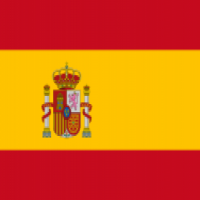Summary:
A Spanish university has developed an automated payment system, in which neither the user nor the collector needs to intervene. The transaction occurs only through the physical presence of the user at the site thanks to an application installed on the user smartphone and the sensorization of the control area to detect the presence of users. Companies dealing with secure payment systems are sought for license or technical cooperation agreements.
Description:
There are multiple mechanisms to make secure electronic payments from different devices. Usually, these systems require the voluntary action of the user to carry out the transaction and interaction with a collector. However, in some cases - payments in public transport services or in events with a large number of people - the intervention of the agents involved is not necessary to make the payment because it is made regularly or the amount is already pre-established, and agility in the service is a priority.
In these types of services it is necessary that the entrance to the venue or vehicle occurs quickly to speed up the passage of all attendees and avoid queues or delays. The problems come when identifying the users who purchase the good or service, and how to execute the monetary transaction without the intervention of buyer and seller.
Current systems require the express interaction of the user with an operator or with a payment machine. The present invention solves these problems and presents an efficient solution for executing a totally unattended and invisible payment.
A Spanish university has developed a completely invisible and agile payment system, ideal for payment in environments with a large number of people. The system is based on a distributed computing architecture and a solution to make the payment safely.
The system is made up of the following elements (Figure 1):
• User devices, mainly smart mobile phones, capable of running an application and capable of communicating with sensors.
• Set of sensor elements which are responsible for capturing data from user devices located in the control area.
• Transceiver. Equipment that is in charge of receiving the data set from all the sensors and interacting with the remote platform in the cloud.
• Cloud remote platform. This element is in charge of collecting all the payment transactions carried out, executing the business layer, the persistence layer and the administration and control layer.
To use the payment system, users must register in an application installed on their mobiles. When these are in the control area, the system detects and identifies the users present through a combination of WIFI, Bluetooth and global system for mobile communication technologies. At that moment, it is detected that the user is enjoying the service provided and the payment is automatically executed based on the pre-established rates.
The system manages the control of attendees and validates the payments, managing the business process and storing the data in the cloud.
The technology is useful for information technology companies interested in developing a secure payment system. However, it may also be of interest, as users of the system, to companies dealing with: events management, sports shows, means of public transport,or any other company that provides a service based on the presence of the client in specific dependencies and that this service has characteristics such as periodicity in use, large accumulation of people or the need to speed up access.
The research group is looking for patent licensing agreements. The company should be responsible for the development of the commercial prototype, the validation of the technology in real scenarios, and its introduction into the market. The university will be ready to provide technical assistance in each step, if required.
However, the university would be also interested in establishing technical cooperation agreements to further develop the system, to find new applications or to adapt it to the company’s needs. The goal of this type of collaboration would be increasing the technology readiness level for a future commercial exploitation of the patent. The university would offer its support based on their know-how; while, the partner sought would provide its expertise to help improve this invention. The university would offer this partner a preferential option to acquire this technology in exclusivity.
Type (e.g. company, R&D institution…), field of industry and Role of Partner Sought:
- Type of partner sought: companies.
- Specific area of activity of the partner: information technology companies managing secure payment systems.
- Task to be performed:
* In the license agreement: to buy a license for the technology, to produce a commercial prototype and make its validation in real scenarios, and to introduce it into the market.
* In the technical cooperation agreement: to provide their expertise in order to collaborate with the scientists on further development and/or improvements of the technology; to provide the scenario that best suits their operation so that the research group can adapt the technology to their needs. The company should identify technical requirements and/or market and client’s needs in order to carry out further technical development so that the market readiness will be increased and the technology could be commercially exploited.
Stage of Development:
Prototype available for demonstration
Comments Regarding Stage of Development:
The research group has developed a functional prototype of the system. The system can be adapted to different contexts and business models depending on the needs of the company.
IPR Status:
Patent(s) applied for but not yet granted
Comments Regarding IPR Status:
Spanish patent application
External code:
TOES20201117002








